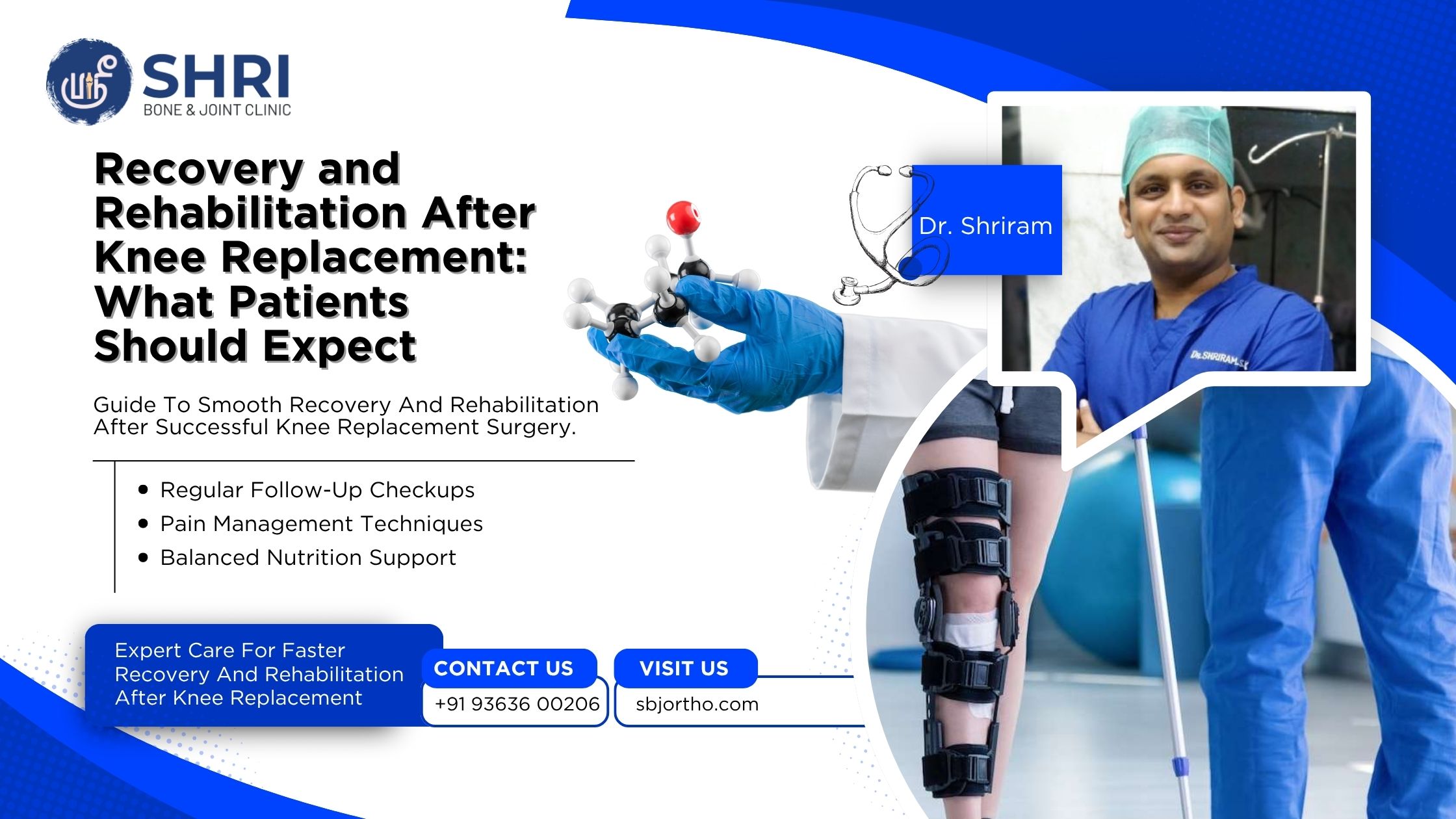Undergoing knee replacement surgery is a major step toward living pain-free and regaining mobility. However, the success of the operation doesn’t end in the operating room—it continues during recovery and rehabilitation.
A structured recovery plan is what helps the new joint function smoothly, reduces stiffness, and restores strength. Whether you’ve had a Bilateral Knee Replacement, Unilateral Knee Replacement, or any other type of knee surgery, understanding the recovery journey will help you prepare mentally and physically for the weeks ahead.
Why Post-Surgery Recovery Matters
Even though knee replacement surgery corrects joint damage, recovery determines how well the new implant integrates with your muscles, bones, and tendons. The first few months after surgery are crucial for:
- Preventing stiffness and scar formation.
- Regaining range of motion in the knee.
- Strengthening surrounding muscles to support the new joint.
- Ensuring long-term implant stability.
Without consistent rehabilitation, even a technically perfect surgery may not achieve its full potential.
The First Few Days After Surgery
Immediately after surgery, patients are monitored in the recovery unit for pain control and vital signs. Most begin gentle movement within 24 hours.
Physiotherapists introduce simple leg lifts, ankle pumps, and knee-bending exercises to maintain circulation and prevent blood clots. The first walk—often with the help of a walker or crutches—typically happens within 1–2 days.
For those who undergo a Unilateral Knee Replacement, standing and walking independently usually happen sooner, since only one knee is operated on. In contrast, Bilateral Knee Replacement patients (both knees at once) might take a few more days to regain balanced movement, but they benefit from one combined recovery period instead of two separate surgeries.
Weeks 1–4: Building Strength and Motion
During the first month, pain and swelling gradually reduce. Physiotherapy becomes more active, with exercises aimed at improving joint motion and building leg strength.
Common milestones include:
- Bending the knee up to 90–100 degrees.
- Walking short distances without major assistance.
- Reducing dependence on pain medication.
Hydrotherapy, stationary cycling, and stretching may also be introduced, depending on the patient’s comfort level.
Patients who have undergone a Muscle-Sparing Knee Replacement, a technique designed for faster recovery, often find that they can walk and resume light activities sooner than those who had traditional surgery. This approach minimizes muscle disruption, allowing smoother motion and quicker healing.
Weeks 4–8: Regaining Independence
By the second month, patients notice significant improvements in mobility and stability. The focus now shifts to rebuilding confidence and endurance.
Physiotherapy becomes more challenging, incorporating:
- Leg presses and resistance band exercises.
- Climbing stairs with alternate legs.
- Balance and coordination drills.
For individuals who have had procedures like Patella Replacement, targeted exercises are essential to strengthen the quadriceps (thigh muscles) that support the kneecap’s movement. Proper kneecap alignment ensures smooth motion and prevents friction during bending.
Many patients can return to desk jobs or light daily activities around the 6–8 week mark. However, it’s important to avoid kneeling, twisting, or lifting heavy objects until the joint is fully healed.
Months 3–6: Returning to Normal Life
This phase is about regaining full range of motion and returning to daily life with confidence. Most patients can walk independently, climb stairs comfortably, and enjoy moderate physical activities such as swimming, cycling, or yoga.
Endurance training and advanced strengthening exercises further improve joint stability and flexibility.
Those who have undergone Unicondylar Knee Replacement (partial knee replacement) typically notice faster overall recovery because much of the natural joint and ligaments are preserved. Their rehabilitation is often smoother and less painful compared to total replacements.
By the 3rd or 4th month, many patients feel nearly back to normal—pain-free, active, and able to handle everyday routines with ease.
Lifestyle Habits That Support Long-Term Recovery
Recovery doesn’t stop after physiotherapy ends. To ensure long-lasting results:
- Stay active: Regular walking keeps muscles strong and joints flexible.
- Watch your weight: Maintaining a healthy BMI reduces strain on the new joint.
- Avoid high-impact sports: Activities like running or jumping can shorten implant life.
- Follow up regularly: Routine checkups ensure the implant remains well-aligned.
- Focus on nutrition: A protein-rich diet supports tissue repair and bone strength.
Consistency in these areas ensures your new knee performs comfortably for decades.
Common Concerns During Recovery
1. Pain and stiffness: Mild pain or tightness is common for a few weeks. Gradual stretching and physiotherapy help relieve it.
2. Clicking or popping sounds: These are usually normal as the new joint adjusts during movement.
3. Swelling around the knee: Elevation, icing, and compression can reduce swelling.
4. Sleep disturbances: Adjusting sleeping positions and using pillows for leg support can help.
5. Fatigue: Energy levels return gradually as your body heals and adapts.
When to Contact Your Doctor
Call your healthcare provider immediately if you experience:
- Excessive redness or warmth around the incision.
- Sudden, severe pain in the knee or calf.
- Fever or fluid discharge from the wound.
- Inability to move the leg despite therapy.
These symptoms could indicate infection or blood clots and should be evaluated promptly.
The Bottom Line
Recovery after knee replacement requires patience, commitment, and consistency. Every individual heals differently, but with proper physiotherapy and lifestyle changes, you can expect to regain full mobility and live pain-free.
Whether you’ve undergone a Bilateral Knee Replacement, a Unilateral Knee Replacement, or specialized procedures like Muscle-Sparing Knee Replacement, Patella Replacement, or Unicondylar Knee Replacement, your determination during rehabilitation plays the biggest role in how well your new knee performs for years to come.

